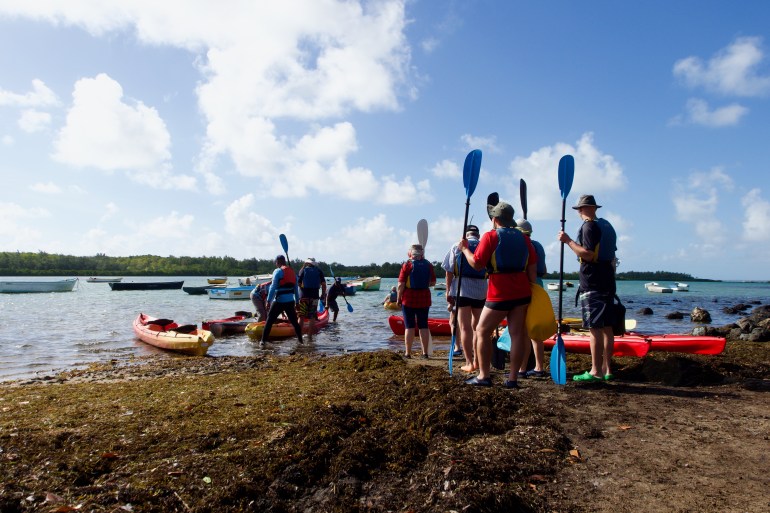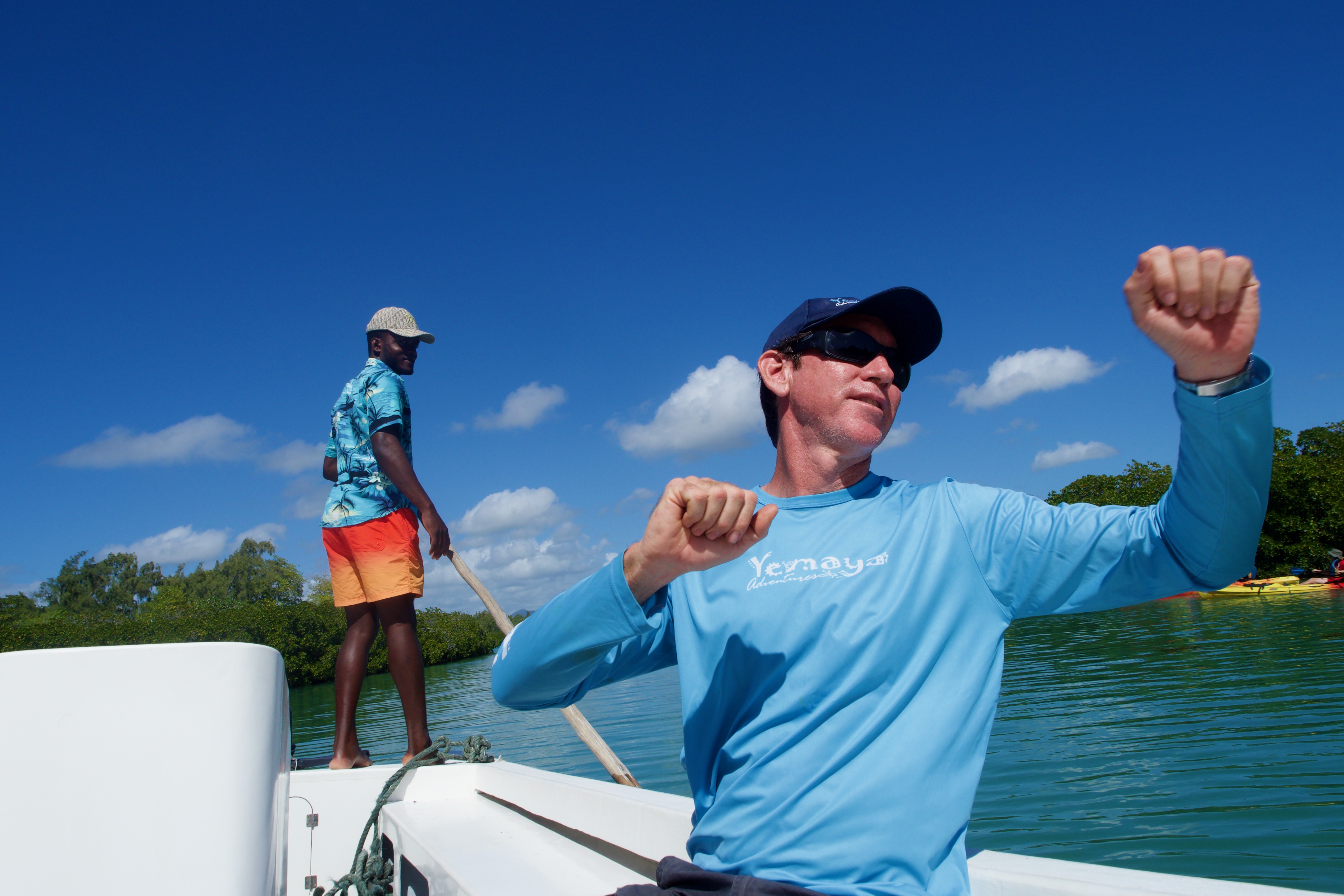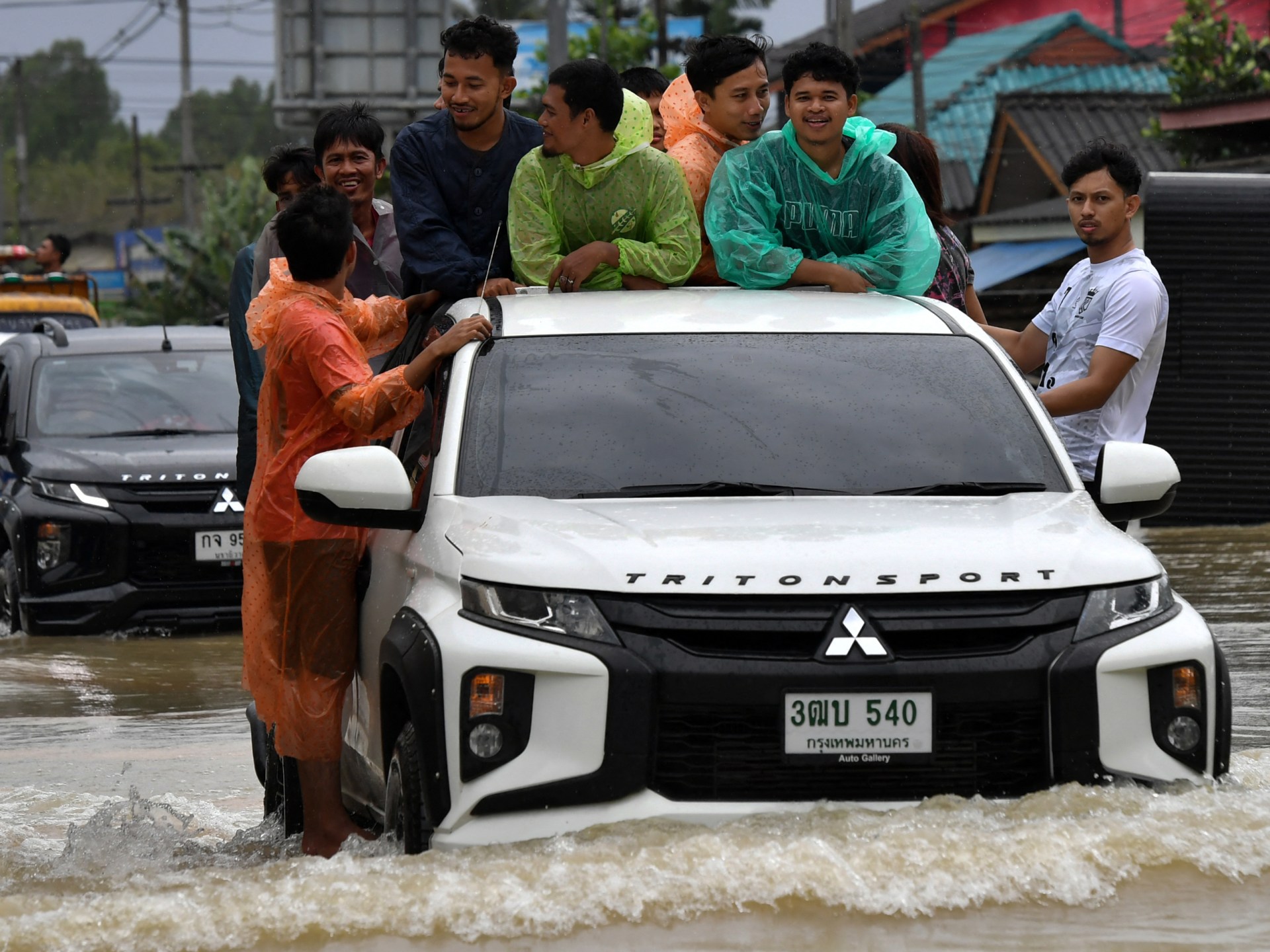‘We are resilient’: Mauritius slowly consolidates ecotourism gains | Environment
Île d’Ambre, Mauritius – It is said to be the place where the last dodo was sighted. Yet, today, Île d’Ambre, an islet off the northeastern coast of Mauritius fringed by bright green mangroves, stands as a symbol, not of extinction, but of survival.
As guide Patrick Haberland explains, vast swaths of mangroves were destroyed right up to the mid-90s, ripped up for firewood or to clear the way for boat routes and hotel construction projects.
Cutting down mangroves is now forbidden by law. Following a national conservation drive, sites like Île d’Ambre have since been restored. Now it’s a national park, protected by the government’s forestry department.
Having escaped extinction, the trees are now vital to the very survival of the nation. Their dense, tenacious roots are among the island’s main lines of defence, along with the coral reef and seagrass beds, against rising tides that are eroding its silvery beaches, gobbling up 20 metres of coastline over the past decade.
It’s a predicament that weighs heavily upon Haberland, who runs Yemaya Adventures, a small company taking tourists on canoeing trips through the mangroves. He is one of a growing number of locals advocating a back-to-nature approach to tourism. “The environment provides us with our livelihood. If we don’t respect it, we won’t have work,” he says.
‘Killing the golden goose’
As tourists flock here in ever greater numbers – up by nearly 60 percent during the first half of this year – the island finds itself in a quandary. How can it sustain an industry that has not only strained its fragile ecosystems but also contributed to global climate change that is in turn bleaching its reefs and causing sea levels to rise by an alarming 5.6mm a year?
“It’s killing the golden goose, destroying the environment,” says activist Yan Hookoomsing, of the nonprofit Mru2025. As Hookoomsing points out, the hotel industry is still expanding. Back in 1997, the government’s “Vision 2020” plan for the industry set a “green ceiling” of 9,000 hotel rooms for the entire country. Recently, tourism minister Steven Obeegadoo announced 19 new hotel builds that will bring that total close to 16,000.
With tourism numbers on the rise, Hookoomsing and his partner, Carina Gounden, are campaigning to fence off the country’s southern coast, proposing a geopark on the stunning stretch of coastline, which features sand dunes, sea cliffs, lava caves, pools, waterfalls, estuaries, lagoons and open ocean.
Currently awaiting government approval, the “green lung” project would be a logical move for a country trying to offset its dependence on tourism with sustainable land use policies – only four percent of native forest is left, the result of extensive cane cultivation going back to the mid-19th century.
Hookoomsing and Gounden fell in love while campaigning to kick hotel developers off Pomponette, a public beach in the south – a battle they finally won in 2020. Like so many other hotel projects, it would have seen locals excluded from their shores. “We need to think about how we share these spaces,” says Gounden. “You can’t just tell the public to move away.”
“Mauritians feel like second-class citizens,” she adds. “There’s a feeling of losing something that made them happy, the beauty of their country. This affects the way we welcome tourists.”
No more greenwashing
“The baseline of what is acceptable is changing,” says Vikash Tatayah, conservation director at the Mauritian Wildlife Foundation.
He’s banking on tourists helping to drive the move towards sustainability. Right now, the foundation is developing niche ecotourism activities that will allow visitors to spend time with local researchers. Eco-volunteerism is another potential growth area, enabling tourists to participate in conservation.
Nature is one of the island’s main draws, he says. “People come from the four corners of the globe to see the kestrels and the pink pigeons. Some come to see rare reptiles. Others come for the rare plants like the tambalacoque (dodo tree) or the mandrinette hibiscus.”

“One thing hotels and companies won’t be able to do in the future is greenwashing – we got rid of all our plastic cups, so we’re ecological,” he adds. “Tourists will want to know the environmental policy of the countries they visit. They will want to know hotels are working on conservation and that staff are locally employed.”
Aware of the changing mood, the luxury market is also getting in on the act. Local group Rogers has repurposed the former sugar estate Bel-Ombre, relaunching the area as a kind of ecotourism mecca. Its three hotels offer carbon-neutral packages integrating solar power and water repurposing initiatives, offsetting emissions through the African carbon credits scheme Aera.
The hotels are located in a buffer zone on the UNESCO-recognised Black River Gorges National Park-Bel Ombre Biosphere Reserve. Covering more than 8,500 hectares (32.8sq miles), the reserve is viewed as a model for eco-friendly development, bringing back endemic trees such as the black ebony and providing a home for rare native species like the Mauritian flying fox and the pink pigeon.
Equitable change
Change seems inevitable, but it will have to be equitable if it is to be truly sustainable, analysts say.
“We need to change sea, sand and sun to restoration, recycling and respect,” says oceanographer Vassen Kauppaymuthoo. “The environment can be used as a transformative tool for tourism. If eco-tourism is presented as an opportunity where people can participate, giving them back confidence, then we can have this spark.”
To a certain extent, he thinks this transformation will require a long, hard think about the nation’s identity, reversing recent trends that have seen it copying glitzy destinations like Dubai and Singapore. Failure to do this properly could see the sector, which represents a quarter of gross domestic product (GDP), going the way of the dodo, he says.
But if there’s anything this small nation excels at, it’s survival. Back in 1968, when Mauritius took its first steps as an independent nation, with only sugarcane mono-crops to its name, it was predicted to fail. By the 90s, it was being hailed as a model for the African continent.
“At the end of the day, we are resilient,” says Kauppaymuthoo. “We’re used to radical change.”
Check out our Latest News and Follow us at Facebook
Original Source






